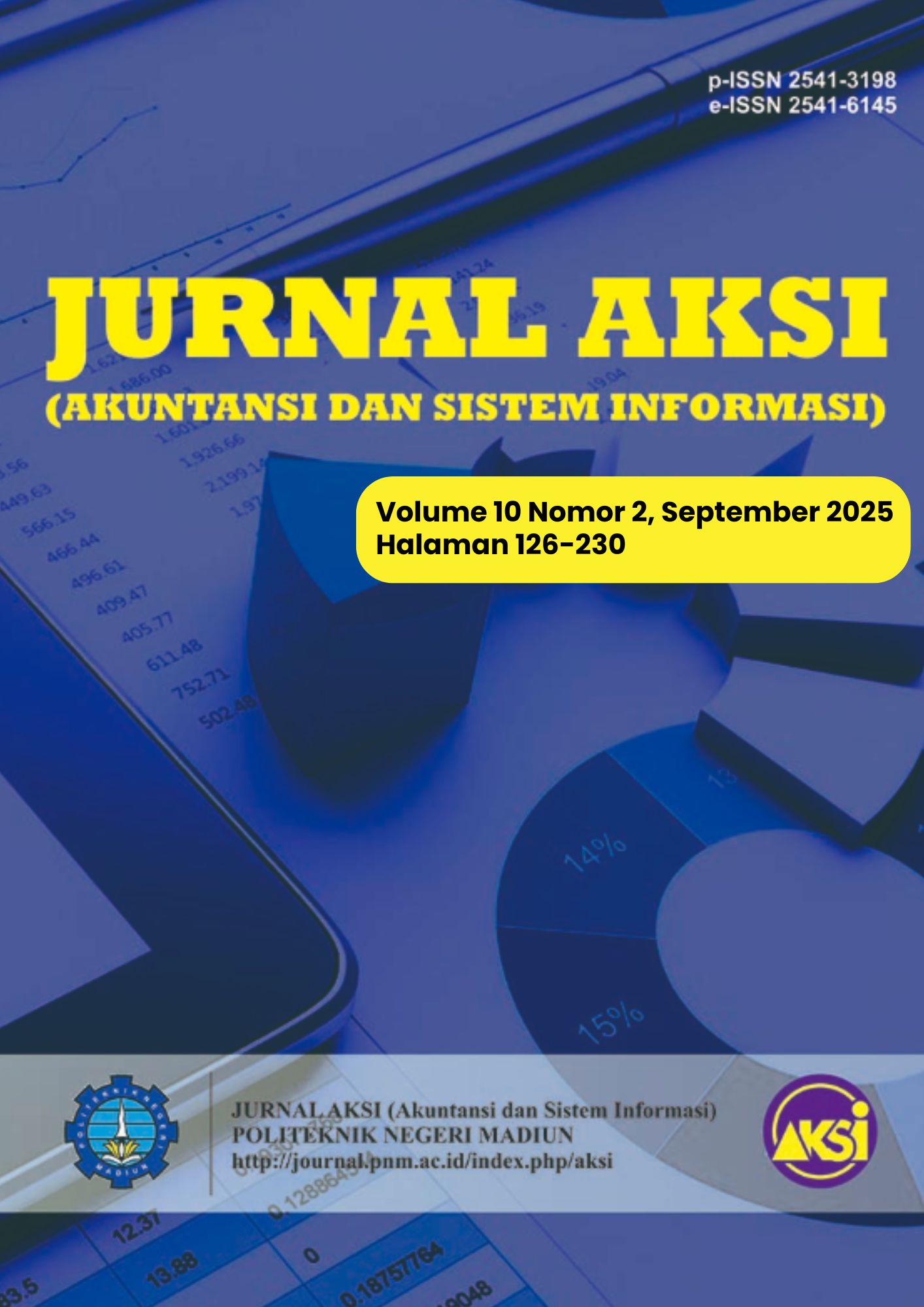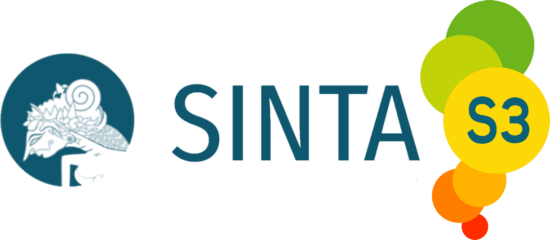Green Economy And Green Finance: A Bibliometric Analysis
DOI:
https://doi.org/10.32486/aksi.v10i2.880Keywords:
Green Economy, Green Finance, Bibliometric AnlysisAbstract
This study aims to examine the development of research trends on green economy and green finance in the 2015–2025 period using a bibliometric approach. Along with the increasing global attention to sustainability issues and environmental policies, this study provides a comprehensive understanding of the development of scientific literature in the field, including mapping publication trends, analyzing academic collaborations, and identifying the main themes that are the focus of research. This study uses a bibliometric analysis method based on Scopus data supported by R-Packages and Biblioshiny WebInterface software. The analysis process is carried out in five main stages, namely document searches based on relevant keywords, article selection according to predetermined criteria, data validation to ensure accuracy, research trend analysis, and data visualization using PRISMA flow diagrams to ensure transparency and systematicity in the selection of literature used. The results of the study indicate a significant increase in the number of publications related to the green economy and green finance, especially after 2020. The main trends in this study indicate a close relationship between the green economy and aspects of sustainable development, technological innovation, environmental policy, and sustainability-oriented investment. In addition, the level of international collaboration in this study is also quite high, with 30.63% of publications involving more than one country.
References
Aditya, I. A., Wijayanto, T., & Hakam, D. F. (2025). Advancing Renewable Energy in Indonesia: A Comprehensive Analysis of Challenges, Opportunities, and Strategic Solutions. Sustainability, 17(5), 2216. https://doi.org/10.3390/su17052216
Akomea-Frimpong, I., Adeabah, D., Ofosu, D., & Tenakwah, E. J. (2022). A review of studies on green finance of banks, research gaps and future directions. Journal of Sustainable Finance & Investment, 12(4), 1241–1264. https://doi.org/10.1080/20430795.2020.1870202
Alsmadi, A. A., & Alzoubi, M. (2022). Green Economy: Bibliometric Analysis Approach. International Journal of Energy Economics and Policy, 12(2), 282–289. https://doi.org/10.32479/ijeep.12758
Ammar, Z., Irwan, M., Sapridawati, Y., Diskhamarzaweny, Andriani, R., & Yulis, Y. E. (2024). Ekonomi Hijau Sebagai Strategi Pembangunan Berkelanjutan di Indonesia: Literatur Review. JURNAL EKONOMI AL-KHITMAH, 6(1), 1–12. https://doi.org/10.36378/khitmah.v6i1.4050
Ariningtyas Prabawati, M. (2022). Konsep Green Economy pada Pola Produksi dan Konsumsi Sebagai Sustainable Development Goals (SDGs) Berkualitas Berbasis Ekologi. Jurnal Sains Edukatika Indonesia (JSEI), 4(1), 36–42.
Athari, S. A. (2024). Does the sovereign environmental, social, and governance sustainability activities jeopardize the banking sector’s stability: Evidence from the Arab economies. Sustainable Futures, 7, 100204. https://doi.org/10.1016/j.sftr.2024.100204
Berrou, R., Ciampoli, N., & Marini, V. (2019). Defining Green Finance: Existing Standards and Main Challenges (pp. 31–51). https://doi.org/10.1007/978-3-030-22510-0_2
Bogovic N D dan Grdic Z.S. (2020). Transitioning to a Green Economy Possible Effects on the Croatian economy. Sustainability. 12.
Chaaben, N., Elleuch, Z., Hamdi, B., & Kahouli, B. (2022). Green economy performance and sustainable development achievement: empirical evidence from Saudi Arabia. Environment, Development and Sustainability, 26(1), 549–564. https://doi.org/10.1007/s10668-022-02722-8
Dziwok, E., & Jäger, J. (2021). A Classification of Different Approaches to Green Finance and Green Monetary Policy. Sustainability, 13(21), 11902. https://doi.org/10.3390/su132111902
Gulzar, R., Bhat, A. A., Mir, A. A., Athari, S. A., & Al-Adwan, A. S. (2024). Green banking practices and environmental performance: navigating sustainability in banks. Environmental Science and Pollution Research, 31(15), 23211–23226. https://doi.org/10.1007/s11356-024-32418-7
Judijanto, L., Yoga, T., & Wijayanti, I. O. (2024). Bibliometric Analysis of Green Finance and Sustainable Investment Strategies. In West Science Social and Humanities Studies (Vol. 02, Issue 12).
Mohamad, A. (2025). Green and climate finance research trends: A bibliometric study of pre- and post-pandemic shifts. In Cleaner Production Letters (Vol. 8). Elsevier B.V. https://doi.org/10.1016/j.clpl.2025.100098
Nhung, D. T. H., & Hang, T. T. T. (2024). Research on Green Finance: A Bibliometric Analysis. RESEARCH REVIEW International Journal of Multidisciplinary, 9(7), 01–07. https://doi.org/10.31305/rrijm.2024.v09.n07.001
Özbay, R. D., Athari, S. A., Saliba, C., & Kirikkaleli, D. (2022). Towards Environmental Sustainability in China: Role of Globalization and Hydroelectricity Consumption. Sustainability, 14(7), 4182. https://doi.org/10.3390/su14074182
Pearce, D., Markandya, A., Barbier, E. (1989), Blueprint for a Green Economy. London: Earthscan Publications Ltd.
Prasetya, P., & Ali, M. M. (2024). Perkembangan Ekonomi Hijau di Indonesia dalam Perspektif Global: Analisis Bibliometrik dan Strategi Kebijakan. Jurnal Riset Ekonomi, 4(2), 503–516.
Rahman H & Kebijakan I. (2023). Analisis Bibliometrik Perkembangan Penelitian Inovasi Kebijakan di Indonesia Bibliometric Analysis of Policy Innovation Research. 7, 37–48.
Rahyono. (2024). Pengembangan Ekonomi Hijau: Peluang dan Tantangan di Indonesia. COSTING
Saliba, C. B., Hassanein, F. R., Athari, S. A., Dördüncü, H., Agyekum, E. B., & Adadi, P. (2022). The Dynamic Impact of Renewable Energy and Economic Growth on CO2 Emissions in China: Do Remittances and Technological Innovations Matter? Sustainability, 14(21), 14629. https://doi.org/10.3390/su142114629
Singh S and Dhir S. (2019). “Structured review using TCCM and bibliometric analysis of international cause-related marketing, social marketing, and innovation of the firm. International Review on Public and Nonprofit Marketing, 16(2–4), 335–347.
Tariq, A., & Hassan, A. (2023). Role of green finance, environmental regulations, and economic development in the transition towards a sustainable environment. Journal of Cleaner Production, 413, 137425. https://doi.org/10.1016/j.jclepro.2023.137425
Ulfatun Naili Nadhiroh. (2023). Analisis Bibliometrix Peran Perempuan dalam Pendidikan Islam pada Database Scopus Tahun 2012-2022. 7.
UNCTAD. (2011). Green Economy definition. United Nations Conference on Trade and Development.
UNEP. (2011). Towards a Green Economy: Pathways to Sustainable Development and Poverty Eradication. United Nations Environment Programme.
United Nations Development Programme (UNDP). (2014). I-GEM: Measuring Indonesia's Transition Towards a Green Economy.
Yan, L., Wang, H., Athari, S. A., & Atif, F. (2022). Driving green bond market through energy prices, gold prices and green energy stocks: evidence from a non-linear approach. Economic Research-Ekonomska Istraživanja, 35(1), 6479–6499. https://doi.org/10.1080/1331677X.2022.2049977
Zhou, X., Tang, X., & Zhang, R. (2020). Impact of green finance on economic development and environmental quality: a study based on provincial panel data from China. Environmental Science and Pollution Research, 27(16), 19915–19932. https://doi.org/10.1007/s11356-020-08383-2
Zhuo, C., & Deng, F. (2020). How does China’s Western Development Strategy affect regional green economic efficiency? Science of The Total Environment, 707, 135939. https://doi.org/10.1016/j.scitotenv.2019.135939
Downloads
Published
How to Cite
Issue
Section
License
Copyright (c) 2025 Rozida Novtiani

This work is licensed under a Creative Commons Attribution-ShareAlike 4.0 International License.














